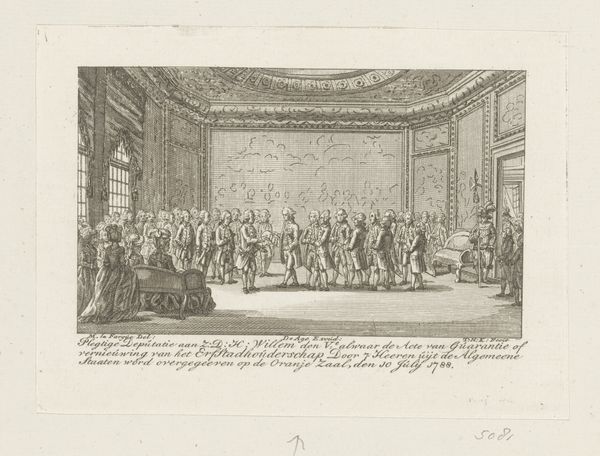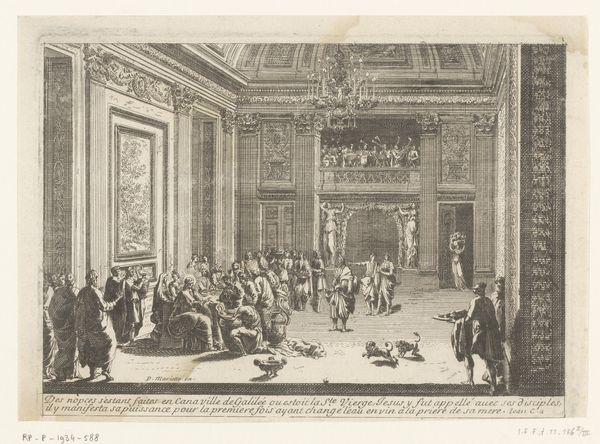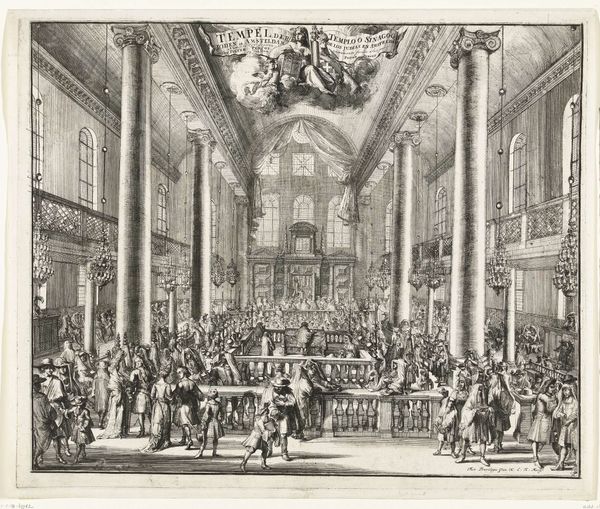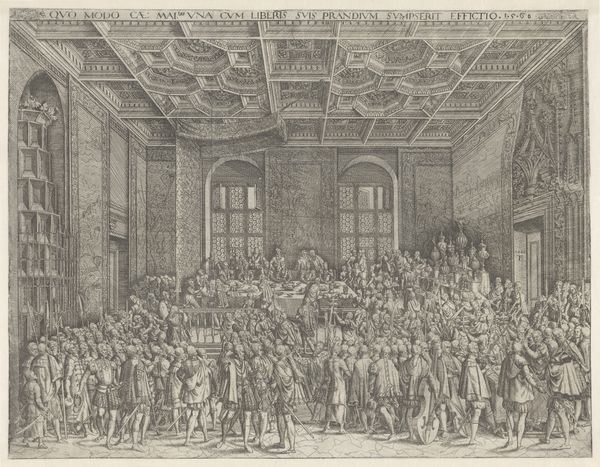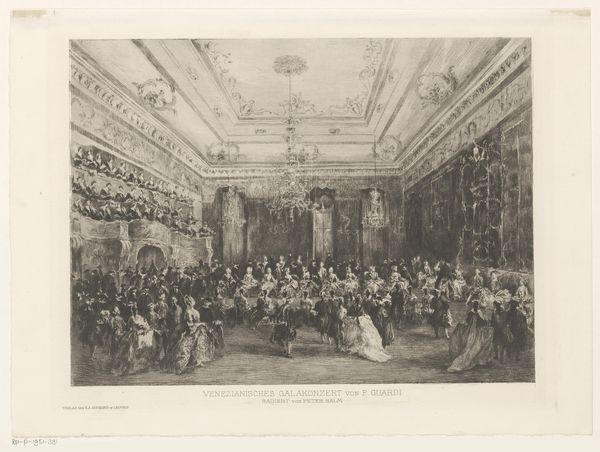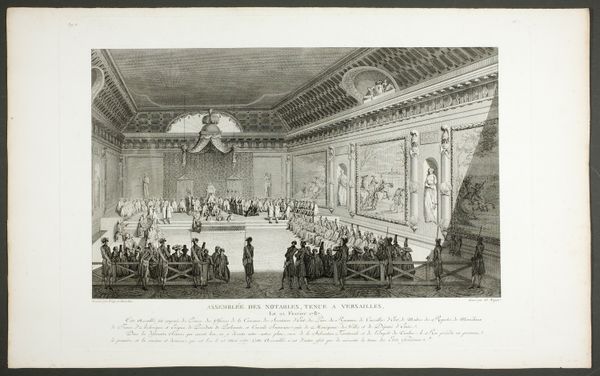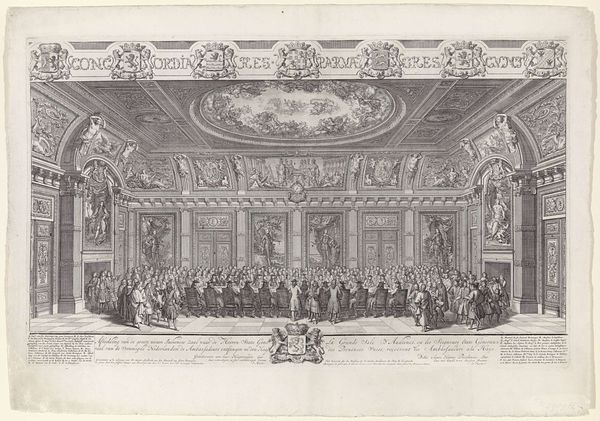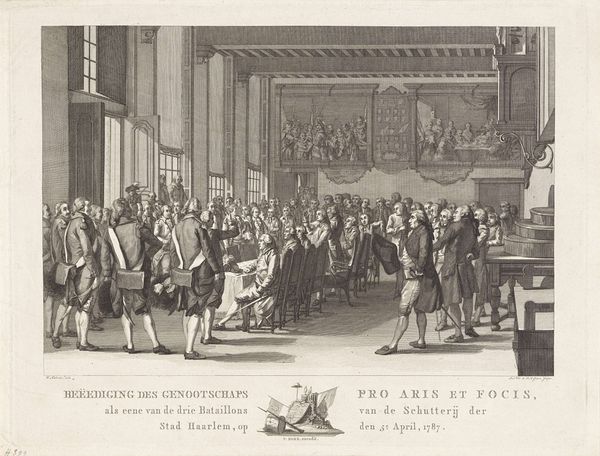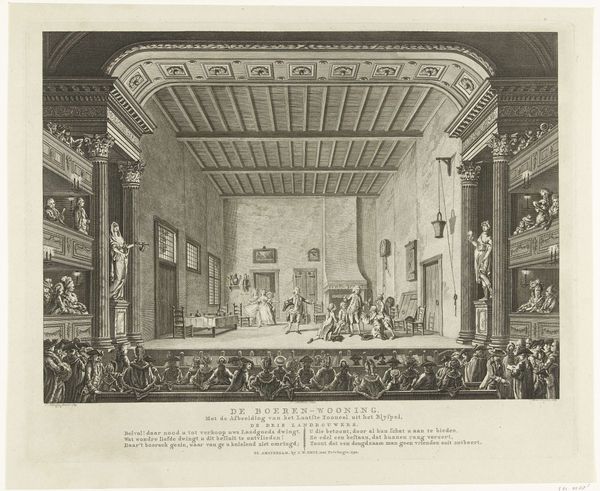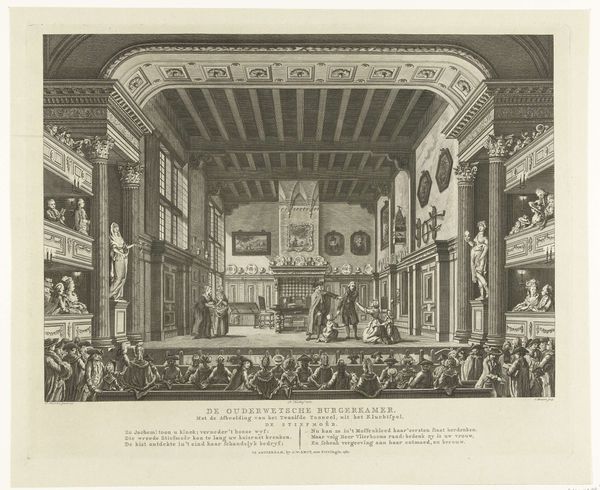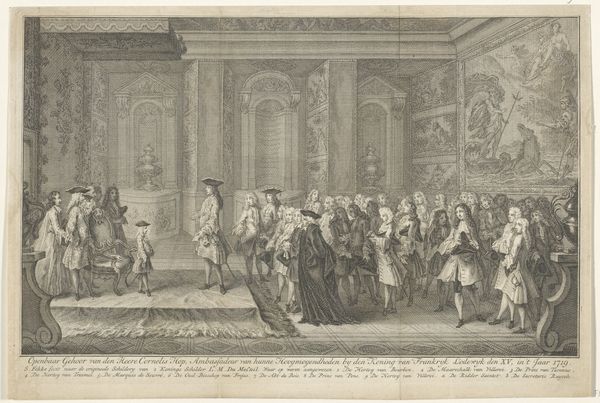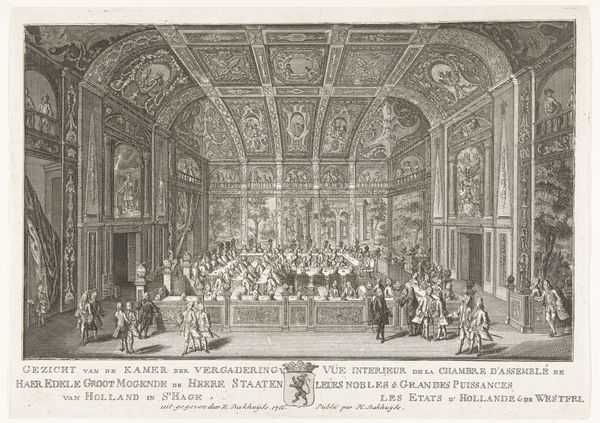
Diner ter ere van de intocht van Leopold in Brussel, 1686 1686 - 1687
0:00
0:00
romeyndehooghe
Rijksmuseum
engraving
#
baroque
#
figuration
#
line
#
cityscape
#
genre-painting
#
history-painting
#
engraving
Dimensions: height 415 mm, width 554 mm
Copyright: Rijks Museum: Open Domain
This print, made by Romeyn de Hooghe in 1686, commemorates a dinner in Brussels honoring Leopold. It was made using etching, a printmaking technique that relies on the corrosive properties of acid. Etching allowed De Hooghe to depict this lavish scene with incredible detail. The acid bites into the metal plate, creating lines that hold ink, which is then transferred to paper under immense pressure. Note the intricate patterns on the ceiling, the elaborate wall hangings, and the sheer number of people packed into this room. All this opulence speaks to the power and wealth on display, and the social hierarchy of 17th-century Europe. The process itself, etching, mirrors the social dynamics represented. It’s a technique that requires skill and labor, much like the feast depicted. But who benefits from this labor? The elite, celebrated in the print, and the artist, who through his craft, immortalizes their privilege. By focusing on the materials and processes, we see how art is always tied to broader issues of labor, politics, and consumption, blurring the lines between art and craft.
Comments
No comments
Be the first to comment and join the conversation on the ultimate creative platform.
